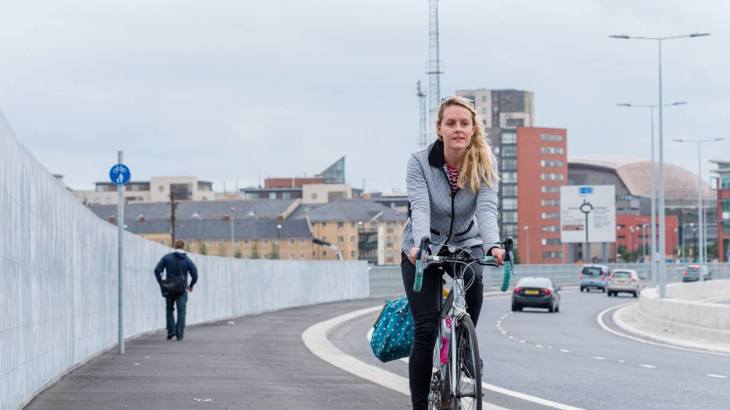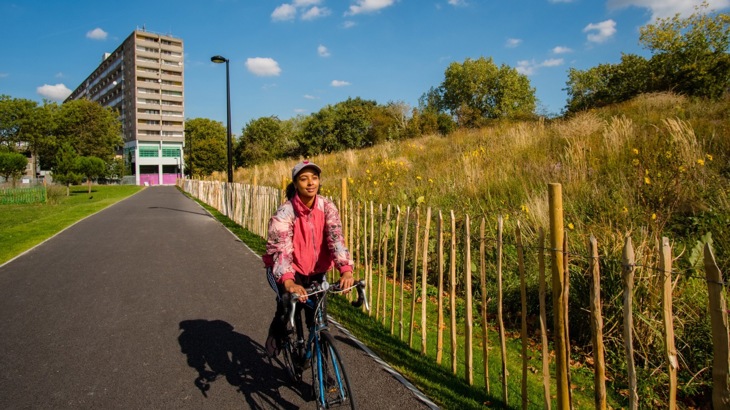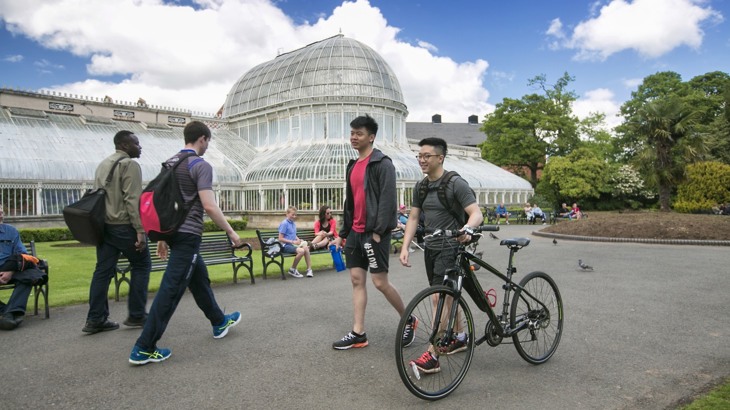Transport availability has a huge impact on the life-choices young people make. And access to transport is key to defining the options that young people have. For example, if a local college doesn’t run the subject that a young person is interested in, is it possible for that individual to access a more distant college that does support their preferred subject? If a job offer is made, can an individual get to that place of work?

For many young people, transport can steer decision making that is crucial to the course that their lives take. These sorts of decisions can profoundly affect health outcomes in later life.
The Health Foundation is conducting a Young People’s Future Health Inquiry. The Inquiry aims to build an understanding of the influences affecting the future health of young people.
One of the themes that emerged most strongly from the early stages of the Inquiry was the extent to which transport plays a role in supporting positive health outcomes.
Sustrans and the University of the West of England’s Centre for Transport and Society were commissioned by the Health Foundation to review young people’s access to transport, their use of transport and the impacts transport can have on their lives.
The study reviewed research and identified eight ways in which transport can influence life course and health outcomes.
- Education and training options - Young people can have limited local education and training options due to lack of transport to get to more distant opportunities
- Participation in out-of-school activities - A household car enables children to participate to a greater extent in out-of-school activities; participation in out-of-school activities has been shown to benefit children economically in the long run
- Physical activity and mental wellbeing - Walking and cycling contribute significantly to recommended physical activity levels for young people who travel in these ways and physical activity is linked to better mental wellbeing
- Independence, autonomy and self-worth - Independent mobility allows young people to develop social connections and choose their own activities, providing increased autonomy in their lives
- Capabilities and willingness to use transport options - Young people supported and encouraged to use alternatives to the car as children are more likely to be willing to use them when older
- Employment opportunities - Young people are disinclined from considering jobs with difficult journeys by public transport and employers are reluctant to offer jobs to them
- Stress, fatigue and low self-esteem - Poor quality of the built environment for walking (unattractive, mistreated and ‘forgotten’ places) causes psychological and emotional stress
- High transport costs and job/housing immobility - Young people are less likely to change their job or move home to seek improved career opportunities than previously was the case with high transport (and housing) costs seen as contributory factors
In the interests of fairness and equality, it is essential that we try to make sure that transport helps to maximise the opportunities that young people have. This is crucial to supporting positive health outcomes for more young people.
The dividends of improved health outcomes, in terms of the reduced burden on health care services, could be considerable.
With this in mind, the report makes recommendations that seek to overhaul transport to give young people the best possible start in life.

The report encourages the government to invest a greater proportion of the overall transport budget in walking and cycling and encourage younger people to travel actively.
Re-prioritising investment
Recommendation 1 - Transport subsidies should be redirected as a force for positive change for young people.
Subsidies and policies that stimulate car use carry negative effects on public health and tend to impact disproportionately on those living in more deprived areas.
A transformative transport system would reward positive travel choices, rather than locking-in behaviours with a greater negative cost to society, and thereby benefit younger people.
Recommendation 2 - Government needs to support systems for concessionary fares, bursaries and loans that are clear, universal and consistently applied.
Concessionary fares systems need to be non-discretionary and funded across the UK to benefit those younger people who are most in need of reduced travel costs.
Concessionary fares should cover all those subject to compulsory study or training (16 and 17-year-olds) and all those people under 25 looking for work and in the first months of employment.
Recommendation 3 - Government should invest a greater proportion of the overall transport budget in walking and cycling and encourage younger people to travel actively.
Transport investment should align with the move towards preventive healthcare.
Too few young people are walking or cycling, partly due to poor physical environments to do so and partly due to not developing skills and capabilities.
The planning system should prioritise the creation and retention of jobs for younger people in locations that can be served by walking, cycling or public transport.
Schools and other educational institutions should have appropriate infrastructure to provide for them to be reached by walking and cycling, and infrastructure for cycling and walking should address the needs of younger people in terms of destinations, amenity and convenience.

There needs to be a clearer voice for young people in planning and delivering transport services.
Enhancing decision-making
Recommendation 4 - Transport planning decisions should acknowledge the impacts of transport on young people and reflect the need to reduce inequality in transport access in the investment decision-making process.
Decisions on transport planning do not sufficiently acknowledge the wider societal and wellbeing impacts of transport for young people.
Investment decisions should be guided by whether they reduce inequality in transport access, including for young people.
Recommendation 5 - Planning regulations should ensure that housing connects younger people to sustainable transport options.
A new development that is attractive to younger people should, wherever possible, be located within or adjacent to existing urban areas or commuter hubs.
Existing housing stock that is suited to younger people should be connected to transport infrastructure that supports mobility for younger people.
Better understanding young people’s needs
Recommendation 6 - Transport regulators and providers should engage with local youth councils and other fora to ensure they are aware of the needs and views of younger people on local transport issues.
There needs to be a clearer voice for young people in planning and delivering transport services.
Stakeholders in local authorities with similar characteristics should share learning with each other about the approaches they are adopting to give young people a voice and address their needs.
Recommendation 7 - Government needs to initiate in-depth research and analysis of young people’s travel patterns, needs and attitudes, and of the role of transport access and choice in supporting young people to develop and transition to an independent, healthy future.
Our review identified a large range in young people’s experiences and attitudes depending on their income, location and the nature of the transport offer near them.
It is therefore important for the Government to cater to different socio-economic circumstances and geographical areas and to examine the relationship between access to different modes of transport and educational, employment and social outcomes for young people.





